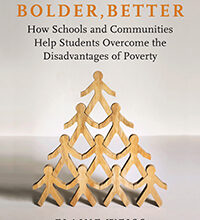What is critical thinking? – Alt Ed Austin


Guest contributor Stephanie Simoes is the founder of Critikid.com, a website dedicated to teaching critical thinking to kids and teens through interactive courses, worksheets, and lesson plans.
“Critical thinking” is a trendy term these days, especially in the education world. Alternative schools in Austin commonly advertise that they encourage kids to think critically. Conversations about critical thinking are often accompanied by some version of the Margaret Mead quote, “Children must be taught how to think, not what to think.” But such discussions often neglect a crucial question: “What does it mean to teach children how to think?” Critical thinking is an abstract term. Are we all on the same page when talking about it?
As the founder of a critical thinking site for kids, this question is important to my work. We all get what “thinking” is, so the real question is—what makes it “critical”? I like to use a simple definition: critical thinking is careful thinking. It requires slowing down and questioning our assumptions.
Fast and Slow Thinking
Our brains are hardwired to respond to stimuli quickly, a crucial advantage in emergencies. When faced with a potential threat, immediate reaction is essential—there’s no time for deliberation. While this quick thinking might make us mistakenly perceive a harmless situation as dangerous, it’s a safer bet to err on the side of caution in high-stakes moments. It’s a matter of survival: better to assume danger where there is none than to overlook a real threat.
While fast thinking[1] is a valuable skill, it is prone to errors.
Here’s an example. Try to answer this question in less than 5 seconds:
If 1 widget machine can produce a total of 1 widget in 1 minute, how many minutes would it take 100 widget machines to produce 100 widgets?
After you’ve given your quick, intuitive answer, take as much time as you need to think about it.
Many people’s initial, intuitive response is 100 minutes. However, with more careful thought, we see that the correct answer is 1 minute. (The production rate per machine is 1 widget per minute. The rate doesn’t change with the number of machines.)
The key takeaway of this puzzle is that careful, deliberate thinking is often more accurate than quick thinking.
Applying slow, careful thinking to every daily decision would be impractical. Imagine how long you would spend at the grocery store if you conducted a deep analysis of every single choice! In many cases, our intuitive, fast thinking serves us well. However, problems can arise when we cling to the conclusions drawn by our fast thinking—especially in situations where accuracy matters.
In the widget machine problem, it’s relatively straightforward to recognize and correct our intuitive response with a bit of careful thought. However, letting go of our intuitive conclusions is not always this easy.
Humility and Critical Thinking
We might cling to our intuitive answers, even when faced with clear evidence or reasoning that challenges them, for several reasons.
First, it can be hard to change our minds when the intuitive answer feels very obvious or the correct answer is very counterintuitive. A famous example is the Monty Hall Problem. The correct answer to this puzzle is so counterintuitive that when Marilyn Vos Savant published the solution in Parade Magazine in 1990, the magazine received around 10,000 letters (many from highly educated people) saying she was incorrect!
It can also be challenging to let go of wrong answers when we have invested in them, such as by spending time and energy defending them. Sometimes, it’s simply a matter of not wanting to admit we were wrong.
Critical thinking requires more than just slow, deliberate thought. It also demands an open mind, humility, and an awareness of our minds’ flaws and limitations.
Building Blocks of Critical Thinking
Paired with slow, deliberate thought and humility, the following tools help us to be better critical thinkers so we can communicate more clearly—even when communicating with ourselves:





